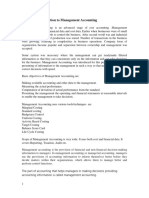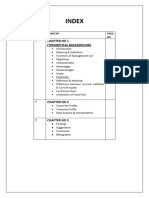0% found this document useful (0 votes)
63 views13 pagesShort Notes For Second Semester
The syllabus covers various aspects of Cost and Management Accounting, including cost behaviors, contract and process costing, and costing systems. It emphasizes the importance of management accounting in planning, controlling, and decision-making, while also discussing the limitations and advantages of cost accounting. Additionally, it outlines the classification of costs and the purchasing process for materials, highlighting the significance of effective inventory management.
Uploaded by
krishnasuppliers010Copyright
© © All Rights Reserved
We take content rights seriously. If you suspect this is your content, claim it here.
Available Formats
Download as PDF, TXT or read online on Scribd
0% found this document useful (0 votes)
63 views13 pagesShort Notes For Second Semester
The syllabus covers various aspects of Cost and Management Accounting, including cost behaviors, contract and process costing, and costing systems. It emphasizes the importance of management accounting in planning, controlling, and decision-making, while also discussing the limitations and advantages of cost accounting. Additionally, it outlines the classification of costs and the purchasing process for materials, highlighting the significance of effective inventory management.
Uploaded by
krishnasuppliers010Copyright
© © All Rights Reserved
We take content rights seriously. If you suspect this is your content, claim it here.
Available Formats
Download as PDF, TXT or read online on Scribd
/ 13






















































































